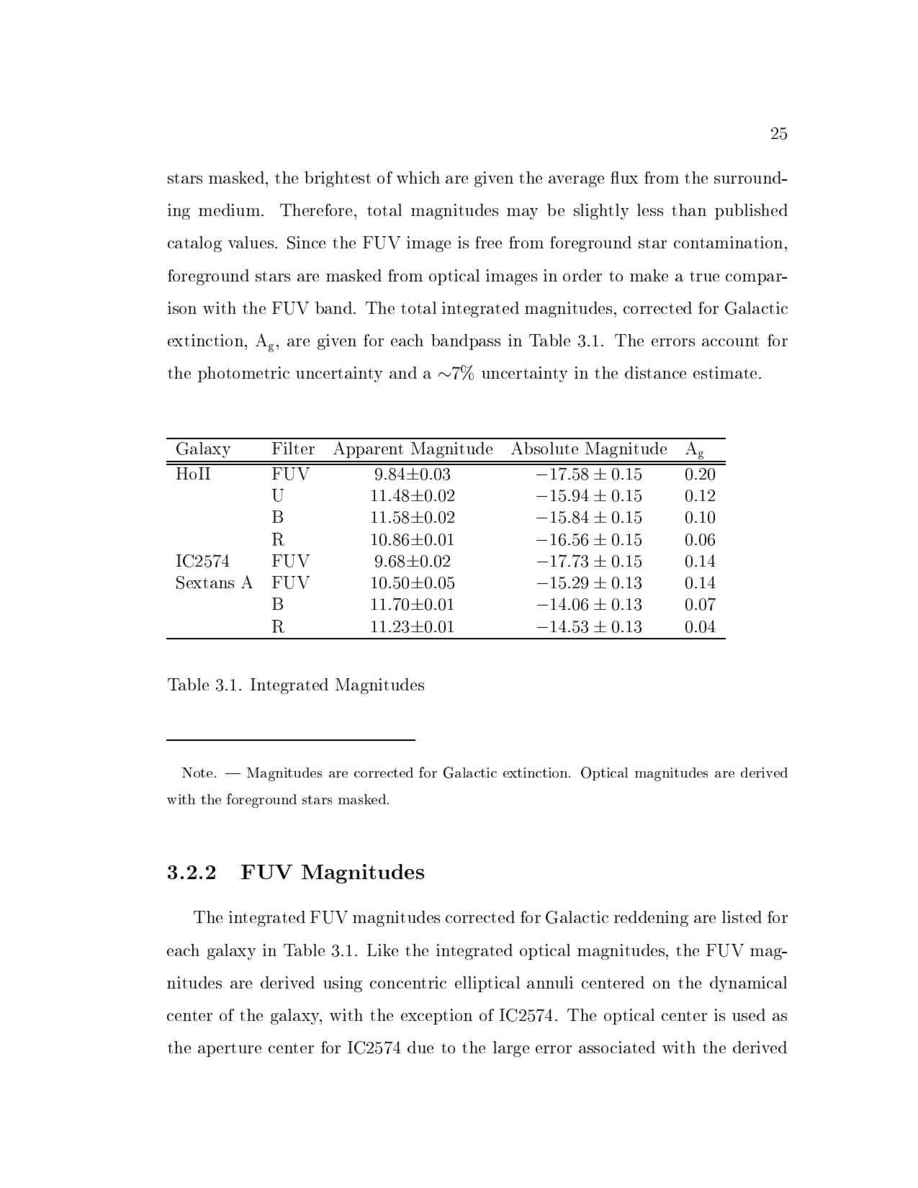Astronomical Applications Department, U.S. Naval Observatory thesis Page 39

25
stars masked, the brightest of which are given the average ux from the surround-
ing medium. Therefore, total magnitudes may be slightly less than published
catalog values. Since the FUV image is free from foreground star contamination,
foreground stars are masked from optical images in order to make a true compar-
ison with the FUV band. The total integrated magnitudes, corrected for Galactic
extinction, A
g
, are given for each bandpass in Table 3.1. The errors account for
the photometric uncertainty and a
7 uncertainty in the distance estimate.
Galaxy
Filter Apparent Magnitude Absolute Magnitude A
g
HoII
FUV
9.84
0.03
,
17
:
58
0
:
15
0.20
U
11.48
0.02
,
15
:
94
0
:
15
0.12
B
11.58
0.02
,
15
:
84
0
:
15
0.10
R
10.86
0.01
,
16
:
56
0
:
15
0.06
IC2574
FUV
9.68
0.02
,
17
:
73
0
:
15
0.14
Sextans A FUV
10.50
0.05
,
15
:
29
0
:
13
0.14
B
11.70
0.01
,
14
:
06
0
:
13
0.07
R
11.23
0.01
,
14
:
53
0
:
13
0.04
Table 3.1. Integrated Magnitudes
Note. | Magnitudes are corrected for Galactic extinction. Optical magnitudes are derived
with the foreground stars masked.
3.2.2
FUV
Magnitudes
The integrated FUV magnitudes corrected for Galactic reddening are listed for
each galaxy in Table 3.1. Like the integrated optical magnitudes, the FUV mag-
nitudes are derived using concentric elliptical annuli centered on the dynamical
center of the galaxy, with the exception of IC2574. The optical center is used as
the aperture center for IC2574 due to the large error associated with the derived
